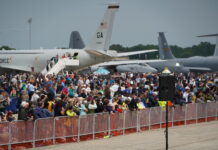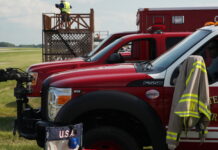In our business, the topic of air show safety is never far from the minds of those with even a small amount of responsibility for preserving it. Our ACE Committee and Safety Committee are easily our most active standing committees. The educational program at our annual convention is dominated by discussions on important, potentially life-saving safety issues. And, during the last ten years, hundreds of pages in this magazine have been devoted to a wide variety of safety issues, from performer safety tips, emergency response planning, and accident analysis to air boss discussions, advice on eliminating safety hazards and case history-type safety articles.
Understandably, the focus of these conversations, articles and education sessions has always been on avoiding safety problems. And, demonstrably, all of this discussion has had a positive impact. By virtually any measure, air show safety has improved significantly during the last 15 years. Performer fatalities have decreased significantly since ICAS assumed most of the responsibility for the Aerobatic Competency Evaluation (ACE) program in the early 1990s. And longstanding spectator safety programs – and disciplined adherence to these programs — continue to make the air show industry’s spectator safety record the envy of the rest of the motor sports industry.
But, in this issue of Air Shows Magazine, we’re taking a close look at what happens when an accident occurs despite all of your planning and preparation. In two different articles, we look at the aftermath of air show accidents.
The article on last year’s accident in Hillsboro, Oregon (beginning on page 16) explains how the leadership of the Oregon International Air Show executed the post-accident response plan that they had developed and fine-tuned with the hope that they would never actually need it. When a Hawker Hunter crashed in a neighborhood near the Portland-Hillsboro Airport, air show event organizers demonstrated just how committed they are to the community. Despite the tragic circumstances, the event organizers’ reaction to the accident actually strengthened the relationship between the show and community, but only because the group had a strong plan in place and implemented that plan thoroughly and respectfully.
In an article by Dr. David Bowling, a regional director for the National Transportation Safety Board, you’ll get an air show-specific introduction to the NTSB, what its role is in transportation safety, and what you can expect from the NTSB in the unlikely event of an accident at your show. Bowling’s explanation is thorough, enlightening and critically important for anybody who might someday be interacting with the NTSB on an accident investigation.
Though both articles address what to do after an accident, we think that you’ll find both of them to be useful and pertinent in the planning you do to avoid accidents and other safety problems.
On a personal note, I want to thank all of you that wrote or called to welcome me back into the air show family. It’s good to be back. I look forward to working with and serving all of you for many years to come.








